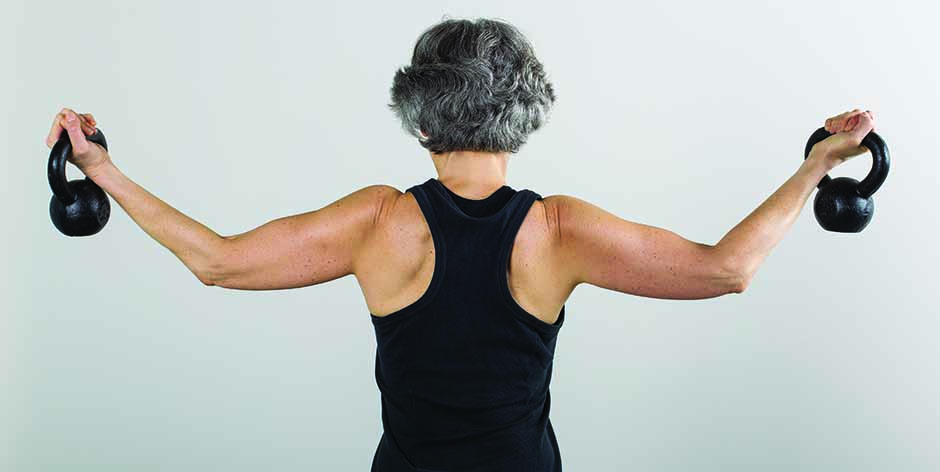Ralph Waldo Emerson once penned: “To be great is to be misunderstood.” These are apt words when applied to the concept of strength training, which often evokes images of hyper-muscular jock-types grunting as they hurl barbells and dumbbells around in a musty gym. In reality, strength training—or resistance training—is any movement in which your muscles contract to resist a force or move a load. The “load” can take many forms: the usual dumbbells, barbells and kettlebells, of course, but also your own body weight or even a bag of groceries. Strength training is crucial for physical health and balance, and it’s easily accessible to every age, body type and fitness level.
WHY YOU NEED TO INCORPORATE STRENGTH TRAINING
As infants, we innately embrace strength training: Picture a baby on his tummy pushing up to see what’s in front of him. Kids, too, default almost naturally to jumping, climbing and running, activities that build muscle and bone tissue as children move and grow.
As we age, we get increasingly sedentary, so adults need to be more deliberate about developing strength. Muscle mass decreases with age—a phenomenon known as sarcopenia—as do metabolic demands, which can lead to packing on extra pounds. Strength training can help reverse these trends, improving general health, bone density, muscular strength, mental and emotional well-being, and longevity.
Plus, strength training is life training. Strong muscles expand your recreational options and enable you to complete common tasks—carrying groceries, shoveling snow, climbing stairs, keeping up with kids and grandkids—with more energy and less pain. For elderly adults, exercise that enhances strength and balance can promote more resilient bones and prevent falls. “Strength training aids your body in living better for a longer period of time,” says Amber Long, a certified personal trainer and fitness center director in Kansas City, Kansas.
STRENGTH TRAINING FOR THE AGES
The most effective strength training provides the relative strength you need, according to Katherine and Kimberly Corp, owners of Pilates on Fifth in New York City. In other words, train for the demands and desires of your daily activities, whatever your age.
YOU’RE DOING IT RIGHT WHEN YOU…
Work all major muscle groups, both upper and lower body. Balance is essential: If you strengthen your chest, be sure to work your back too; otherwise you’re setting yourself up for injury.
Don’t overdo it. Start easy and build up gradually. Jumping into the high-level yoga class or loading your barbell on your first go-round leads to injury and discouragement. For weight lifting, start with a weight you can lift 10–12 times (reps) before you need to rest, says David Brown, senior behavioral scientist with the Centers for Disease Control Division of Nutrition, Physical Activity and Obesity. Perform two more sets of 10–12 reps, with a brief rest between sets. As you get stronger, increase the resistance by about 10 percent. And don’t lift every day—waiting a day or two between sessions rebuilds and strengthens muscles.
Choose workouts that suit your life. Consider your interests, your available time and your abilities. Also think about what you need to be strong for. Select exercises that mimic your recreational activities and everyday tasks.
Keep it fresh. Muscles respond to new challenges. Strive to move your body in all planes, at various speeds and in new ways often.






